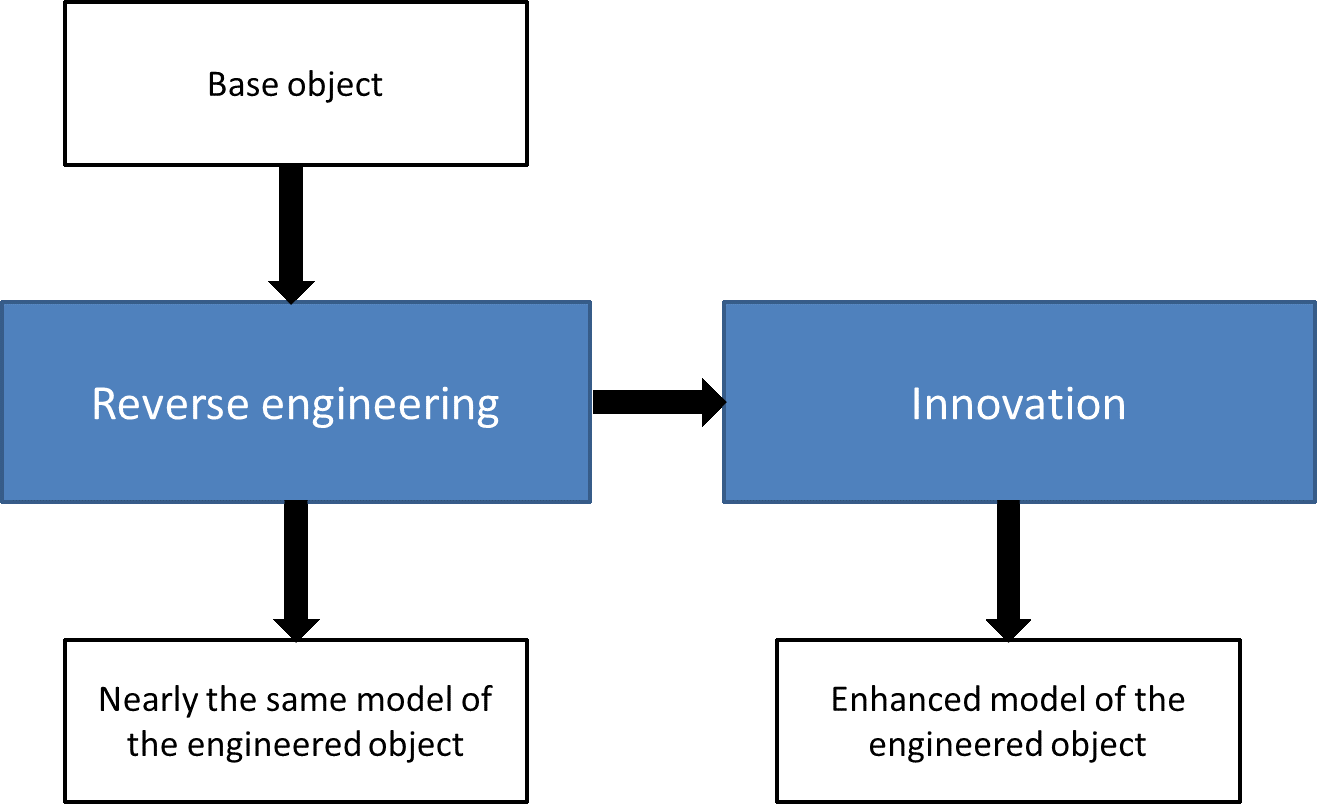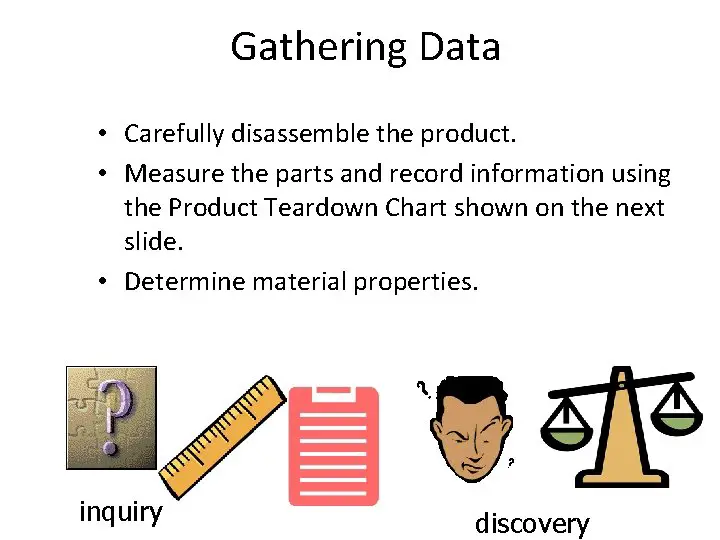Reverse Engineering as a Problem-Solving Tool

Reverse engineering is the process of taking an existing system or product and analyzing it to understand how it works and how it was made. This information can then be used to create a new system or product that has the same or similar functionality.

How Reverse Engineering is a Problem-Solving Tool

Reverse engineering can be used as a powerful problem-solving tool in a variety of contexts. For example, it can be used to:
- Understand how a product works. By reverse engineering a product, you can learn about its design, its components, and how they work together. This information can be useful for troubleshooting problems, making repairs, or designing new products.
- Identify areas for improvement. By analyzing an existing product, you can identify areas where it could be improved. This information can be used to design new products that are more efficient, more reliable, or have more features.
- Identify potential security vulnerabilities. By reverse engineering a product, you can identify potential security vulnerabilities that could be exploited by attackers. This information can be used to develop security patches or design new products that are more secure.
- Learn from others. By reverse engineering existing products, you can learn from the design and engineering decisions that others have made. This information can be used to inform your own design and engineering decisions.
Methodology of Reverse Engineering
To perform reverse engineering, researchers would first need to employ one or several methods for data collection. The selection of data collection methods would heavily depend on the product being analyzed. Some commonly seen data collection techniques are:
- Collecting System Information: Where pertinent information concerning the product’s hardware and software configurations are collected. Normally, this information would include the version number of the product, its operating system and the components’ manufacturer.
- Reviewing Product Documentation: In most cases, there would be a manual that contains specifications, diagrams, and instructions for use and maintenance. This information can help the researchers understand the intended purpose of the product.
- Physical Examination of the Product: Physically inspecting the product can yield information that may not be available through other methods. These could be the model numbers of the components or the patterns on the circuit boards.
- Testing the Product’s Functionalities: Testing the product’s functionalities can help the researchers comprehend the product’s purpose and objective. They can use their findings from the testing to design test cases that are suitable for uncovering potential security exploits.
Following the data collection phase, they would then utilize the gathered data to further analyze the product’s inner workings. This phase normally includes:
- Understanding the Product’s Architecture: Based on the information collected, researchers would then try to understand how the components of the product work together. This includes the interdependencies between the different parts.
- Identifying Key Features and Components: After establishing an understanding of how the product works, they would then attempt to identify the key features and components that contribute to the product’s core functionality.
- Analyzing the Product’s Security: This includes identifying potential vulnerabilities in the product’s design or implementation. In some cases, they might even try to exploit these vulnerabilities to demonstrate the severity of the issues.
- Documenting the Findings: The final step of the reverse engineering process is to document the findings in an appropriate manner. This would normally be done in the form of a technical report or a formal presentation. The purpose of such documentation is to provide a detailed explanation of the findings to relevant stakeholders.
Benefits and Challenges of Reverse Engineering
Reverse engineering can be a valuable problem-solving tool, but it also has some challenges:
- Can be time-consuming and expensive. Reverse engineering a complex system or product can be a time-consuming and expensive process.
- Can be difficult to get access to the necessary information. In some cases, it can be difficult to get access to the necessary information, such as design drawings or source code.
- Can be difficult to understand the original design intent. Sometimes, it can be difficult to understand the original design intent of a system or product. This can make it difficult to reverse engineer it accurately.
Applications of Reverse Engineering
Reverse engineering is used in a variety of applications, including:
- Product development. Reverse engineering is often used in product development to understand how a competitor’s product works and to identify areas for improvement.
- Troubleshooting. Reverse engineering can be used to troubleshoot problems with a system or product. By understanding how the system or product works, it is often possible to identify the cause of the problem and find a solution.
- Security research. Reverse engineering is also used in security research to identify potential security vulnerabilities in a system or product. By understanding how the system or product works, it is often possible to identify ways that it could be exploited by attackers.
Conclusion
Reverse engineering is a powerful problem-solving tool that can be used in a variety of applications. However, it is important to be aware of the challenges associated with reverse engineering before embarking on a reverse engineering project.

This is a great article! I’ve always been interested in reverse engineering, and this article has given me a lot of new insights into the process. I’m especially interested in the way that reverse engineering can be used to develop new products and technologies. I think this is a really exciting area of research, and I’m looking forward to seeing what new developments come out of it in the future.
I’m not sure I agree with the author’s assessment of reverse engineering. I think it can be a very dangerous tool, and I worry that it could be used for malicious purposes. I’m not saying that reverse engineering should be banned, but I do think it’s important to be aware of its potential dangers.
I’m curious about the legal implications of reverse engineering. Is it legal to reverse engineer something that is copyrighted? What about if you’re doing it for research purposes? I’d be interested to learn more about this.
I disagree with the author’s claim that reverse engineering is always a good thing. I think it can be used for malicious purposes, and I worry that it could lead to the development of new weapons and technologies that could be used to harm people.
Ironic that the author is talking about reverse engineering as a problem-solving tool when it’s often used to create problems in the first place. I’m not saying that reverse engineering is all bad, but I do think it’s important to be aware of its potential dangers.
Oh, reverse engineering is a great problem-solving tool, is it? I guess that’s why it’s so popular with hackers and criminals. Way to go, author.
I’m not sure I understand how reverse engineering is supposed to help me solve problems. Is it like when you take apart a toy to see how it works? Because that always ends up with me having a pile of plastic pieces and no toy.
Reverse engineering is a complex and challenging process, but it can be a very rewarding one. I’ve used it to solve a number of problems, both big and small. If you’re interested in learning more about reverse engineering, I recommend checking out some of the resources listed in the article.
I’m worried about the potential dangers of reverse engineering. I’ve heard that it can be used to create new weapons and technologies that could be used to harm people. I hope that researchers will use reverse engineering responsibly and for the benefit of humanity.
I’m excited about the potential of reverse engineering to develop new products and technologies. I think it’s a really promising area of research, and I’m looking forward to seeing what new developments come out of it in the future.
I’m curious about the legal implications of reverse engineering. Is it legal to reverse engineer something that is copyrighted? What about if you’re doing it for research purposes? I’d be interested to learn more about this.
I’m not sure I agree with the author’s assessment of reverse engineering. I think it can be a very dangerous tool, and I worry that it could be used for malicious purposes. I’m not saying that reverse engineering should be banned, but I do think it’s important to be aware of its potential dangers.